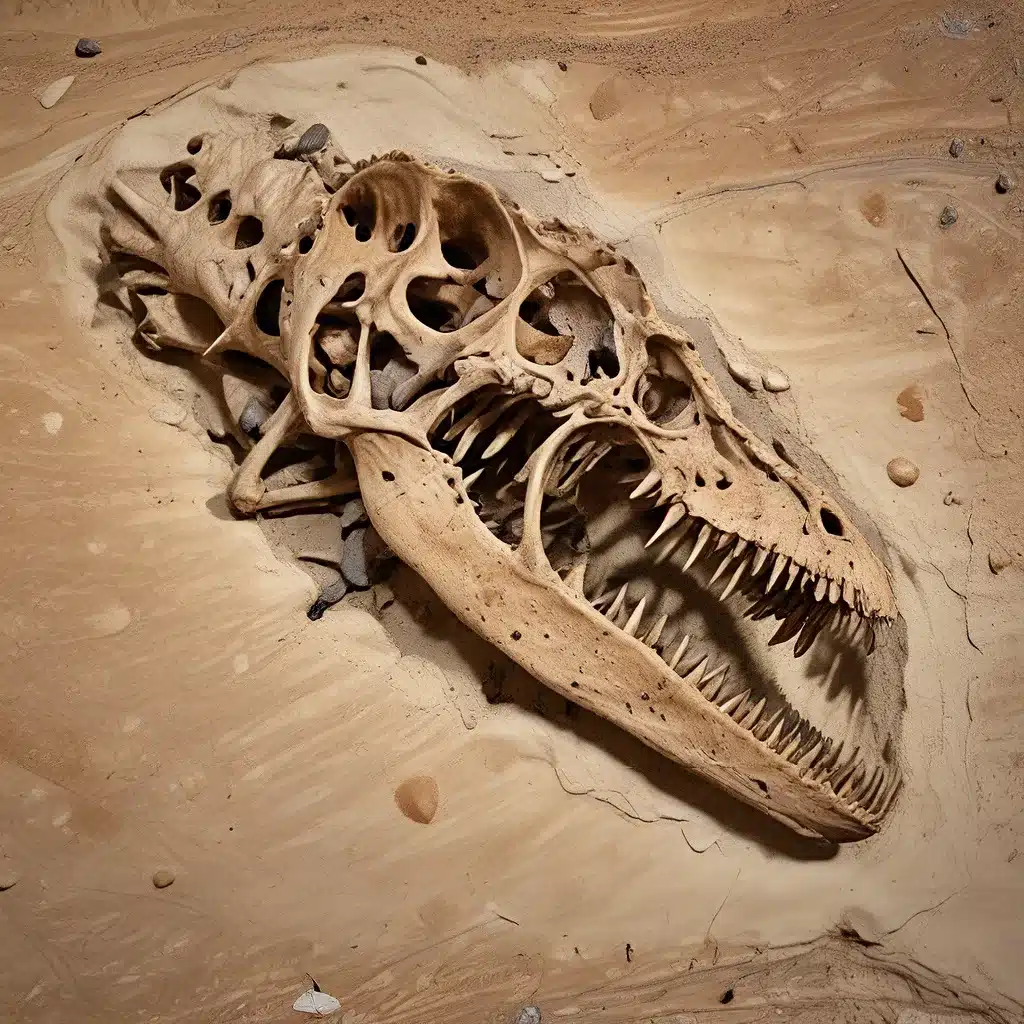
Paleontology, the scientific study of prehistoric life through the examination of fossil remains, has captivated the public’s imagination for centuries. From the towering Tyrannosaurus rex to the majestic Brachiosaurus, these ancient creatures have captured our collective fascination, sparking a deep desire to uncover the secrets of their lost world. At the heart of this pursuit lie the dinosaur bone beds – remarkable sites where the fossilized remains of these prehistoric giants have been preserved, offering a window into the distant past.
Unearthing the Mysteries of Dinosaur Bone Beds
Dinosaur bone beds are discoveries that have transformed our understanding of the Mesozoic Era, the geologic period spanning from approximately 252 to 66 million years ago. These densely concentrated deposits of fossilized bones, teeth, and other remains provide invaluable insights into the lives, behaviors, and ultimate demise of the dinosaurs. By carefully excavating and analyzing the contents of these bone beds, paleontologists have been able to piece together a more comprehensive picture of the ancient ecosystems that these remarkable creatures inhabited.
One of the most significant dinosaur bone bed discoveries in recent history was the Judith River Formation in Montana, United States. This fossil-rich site, dating back to the late Cretaceous period, has yielded a diverse array of dinosaur species, including the ferocious Tyrannosaurus rex, the horned Triceratops, and the duck-billed Edmontosaurus. The sheer number of well-preserved fossils found in this area has allowed researchers to study the social dynamics, feeding habits, and migratory patterns of these ancient creatures, shedding new light on their complex lives.
Deciphering the Clues in Dinosaur Bone Beds
The formation of a dinosaur bone bed is a process that can take thousands, if not millions, of years. These sites are typically the result of mass mortality events, where a large number of animals died in a relatively short period, often due to natural disasters, disease, or other catastrophic occurrences. As the bodies of these creatures decomposed, their bones were gradually buried and fossilized, eventually becoming part of the geological record.
By carefully analyzing the positioning and condition of the fossils within a bone bed, paleontologists can gain valuable insights into the events that led to the animals’ demise. The orientation of the bones, the degree of weathering or damage, and the presence of specific types of fossils can all provide clues about the circumstances surrounding the animals’ deaths and the subsequent processes that shaped the final resting place.
For example, in the case of the Hell Creek Formation in Montana, the discovery of numerous Tyrannosaurus rex skeletons in close proximity to each other has led some researchers to hypothesize that these apex predators may have engaged in complex social behaviors, such as forming hunting packs or defending territorial boundaries. The presence of plant and insect fossils within the same deposits has also provided valuable information about the broader ecosystem in which these dinosaurs lived.
Unearthing New Theories and Perspectives
As our understanding of dinosaur bone beds continues to evolve, researchers have begun to challenge long-held assumptions and propose new theories about the lives and fates of these prehistoric creatures. One such example is the ongoing debate surrounding the causes of mass extinction events, such as the Cretaceous-Paleogene (K-T) extinction that wiped out the non-avian dinosaurs approximately 66 million years ago. While the impact of a massive asteroid strike is widely accepted as the primary cause, some scientists have suggested that gradual environmental changes, such as volcanic activity and climate shifts, may have also played a significant role in the demise of the dinosaurs.
Furthermore, the discovery of feathered dinosaurs in China’s Liaoning province has challenged our conventional understanding of these ancient creatures, revealing that some species may have been more closely related to modern birds than previously thought. This discovery has sparked a reevaluation of the evolutionary relationships between dinosaurs and their avian descendants, leading to a more nuanced and dynamic understanding of the Mesozoic ecosystem.
Preserving the Past for the Future
As the scientific community continues to unravel the mysteries of dinosaur bone beds, the importance of preservation and responsible stewardship of these invaluable resources cannot be overstated. Sadly, the illicit trade in dinosaur fossils has threatened the integrity of many archaeological sites, with rare and valuable specimens often being sold on the black market. To combat this, governments and scientific organizations have implemented stricter regulations and increased efforts to protect these fragile resources for future generations of researchers and the public.
By studying the clues preserved in dinosaur bone beds, we not only deepen our understanding of the ancient past but also gain valuable insights into the complex relationships between species, the impacts of environmental change, and the broader patterns of evolution that have shaped the world we inhabit today. As paleontology continues to push the boundaries of our knowledge, the fascination with these ancient giants will undoubtedly endure, inspiring new generations of scientists and curious minds to uncover the secrets of the lost kingdoms that once roamed the earth.
The Lost Kingdoms is a website dedicated to exploring the mysteries of ancient civilizations and the latest archaeological discoveries. Visit our site to delve deeper into the captivating world of dinosaur research and uncover the untold stories of the past.


